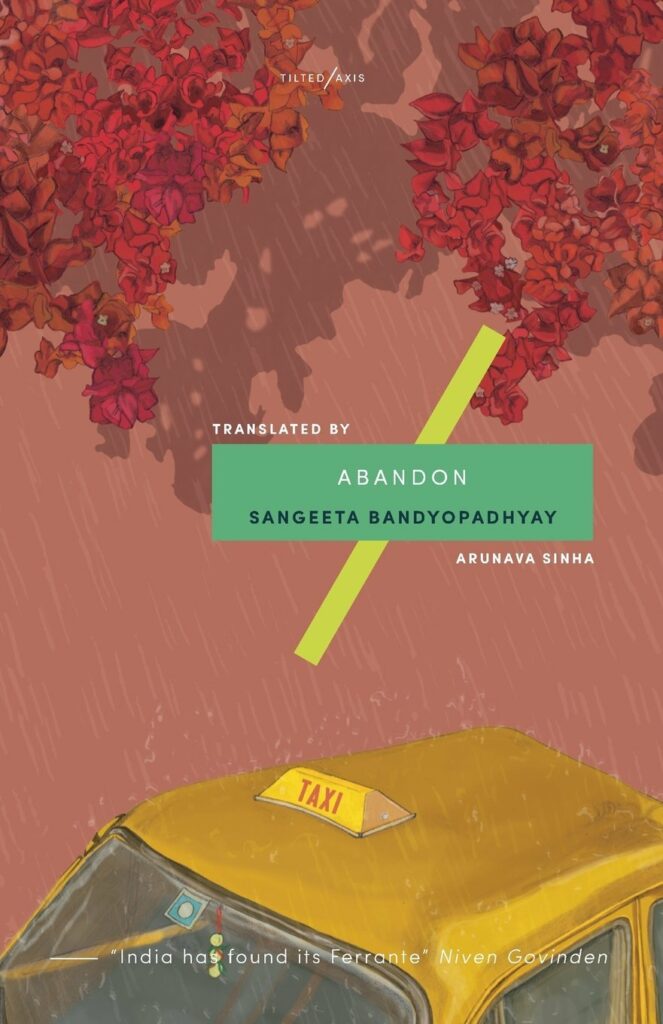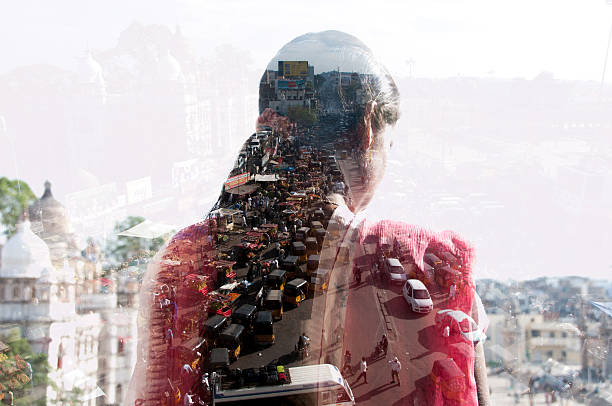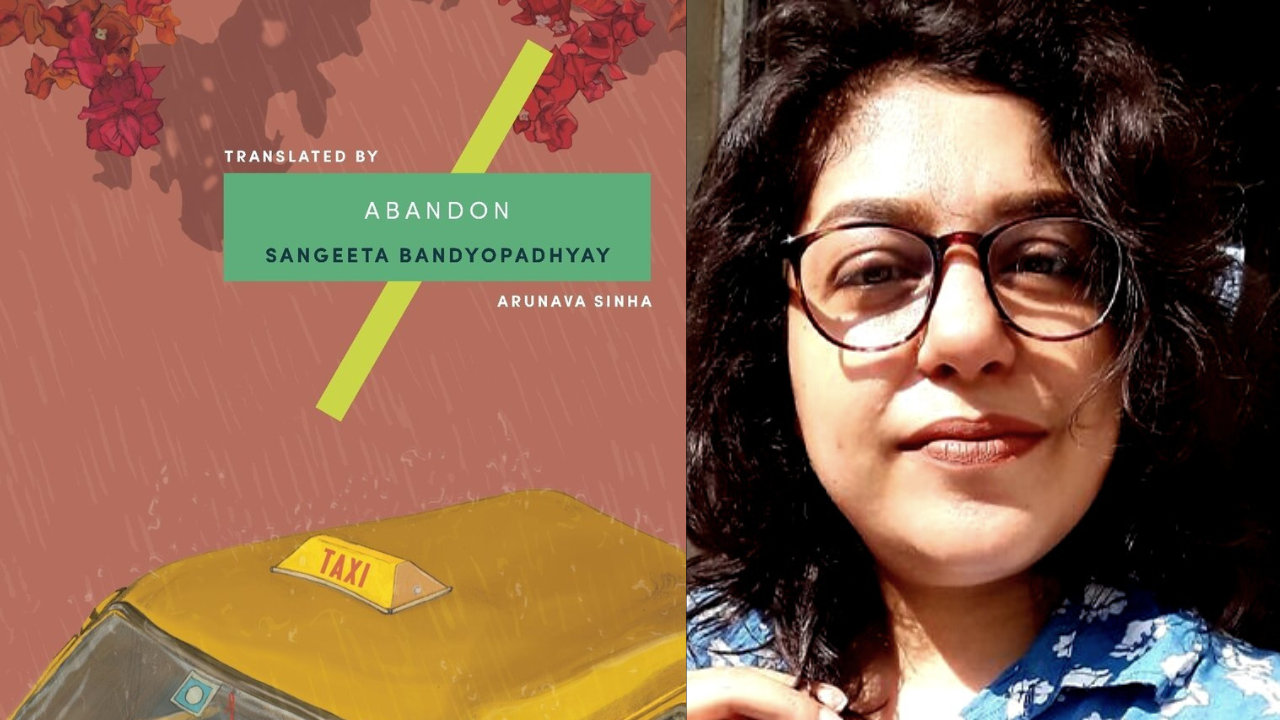Sangeeta Bandyopadhyay’s Abandon revolves around the complexities of life. It is a tale of struggles that Ishwari has to encounter in her life. The story grapples with the dichotomy between creativity and motherhood, and Bandyopadhyay has used the metaphor of a child and mother’s bondage to portray that. Ishwari, who is tied between two identities, that is, of a mother and a writer, is the protagonist of the story. Ishwari as Roo’s mother is the reality, and she uses the second identity of a writer to escape from her existence in the tormented world.
Abandon unfolds as Ishwari arrives in Kolkata and is in search of a shelter. An older man who lives in a guest house helps Ishwari and Roo as he feels pity for the young woman. Roo’s health begins to deteriorate, and he is locked all day in their room when Ishwari wanders searching for jobs. Rantideb, the owner of the guest house helps Ishwari to get a job in one of his friend’s home, from where she meets Bibaswan and falls in love with him.
Also Read: Book Review: Black River By Nilanjana S. Roy
Abandon, in a nutshell, explores female sexuality through the life of the protagonist, Ishwari. A major aspect of the novel is its unique narrative style, where there is a dichotomy between the voice of Ishwari as a character and the narrator. ‘I‘ and ‘Ishwari‘ are the two voices of the story, which are the two personalities of the same person. One is a compassionate mother, and the other is an artistic version of Ishwari. Ishwari is a mother and at the same time, she is also a novelist looking for freedom to pursue her art.

There are different renditions of Ishwari. Ishwari, the mother, resembles the conflicts and hindrances a woman or a mother has to undergo. Iswhari has to constantly choose between her survival and her son’s. On the other hand, ‘I’ represents the self-absorbed and determined writer who wants to produce a great novel. As the novel progresses, Ishwari takes up a new version named ‘Isha’. From the story, it is evident that Isha is the only resort that Ishwari has for her, and ‘I‘ is survival. The narration of the story shifts between the first and third-person points of view. The first-person narrative is Ishwari’s, and the third-person point of view is of ‘I‘.
As the story progresses, the novel unfolds the third version of Ishwari, who is addressed as Isha. In a way, Isha merges the link between Ishwari and the ‘I‘. Isha is brought into the novel through the character, Bibaswan, who hires Ishwari as a companion to him. The novel enters into more complexities as Ishwari meets Bibaswan. He is a young man who is trying to recover from the death of his wife, Tania, and his baby in childbirth and also from the injuries he sustained in a car accident.
Ishwari’s job is to become a companion to him and help him to get his life back. ‘Isha‘ is the name that Ishwari asks Bibaswan to call her. Isha has a different lifestyle inside the Radheshyam house, wherein she has good food, clothes, love, and respect from people. As the novel progresses, Isha develops an affair with Bibaswan. Inside Radheshyam’s house, Isha is not deprived of anything and does not worry about Roo and his deteriorating health.

One of the major conflicts of the story happens between art and empathy. This tension between art and empathy is evident in Ishwari and Bibaswan. Bibaswan is into music, poems, and paintings. But he lacks empathy towards fellow human beings, specifically, Roo, whereas, Ishwari is compassionate towards her fragile son. In an instance, where Bibaswan mentioned Ghazals and music, Ishwari gets reminded of Roo, “Roo? Was Roo someone she knew?”.
At that moment, Ishwari leaves the house. Later, Bibaswan sends his driver to pick her up, and what waited for Ishwari was the enraged Bibaswan. Bibaswan could not control his anger as Ishwari, according to him, has insulted the art by leaving amidst the music, and both of them engage in a dispute about art. It could be understood that Bibaswan was talking to Ishwari, the mother, and not Isha the ‘I‘.
Also Read: Book Review: Gently Falls The Bakula By Sudha Murthy
Ishwari argues that art is nothing but the “means of destroying opportunities, the scope, and the freedom to understand“. Here, Ishwari is acknowledging the self-centred and egoistic nature of Bibaswan. In another instance, where Bibaswan wants Isha to accompany him to Santiniketen, she says that “who will I leave Roo with?” to which Bibaswan responds, “..ask yourself this question. This illness, this gradual and self-depletion in body and spirit- please come out of all these now“. From this, it is understood that he is emotionally needy and a manipulator who feels no empathy for the ill child.

Bibaswan is not concerned about Roo and his sufferings and finds it embarrassing to acknowledge Ishwari’s concerns. The pretentious nature of Bibaswan is evident as he adores music and finds it offensive when Ishwari leaves in between the song at the same time. In that way, Bibaswan becomes the face of a person who is highly concerned with himself, and his own need, and represents the self-conceited person in terms of art.

On the other hand, Ishwari sways between her empathetic maternal side and her self-centred creative side. Isha is the impression that Ishwari is using to convince herself of the importance of having a life of her own. In a way, the empathetic maternal side of Ishwari is exhausted with Roo and his incessant sufferings. When Ishwari falls for Bibaswan, she starts to reflect on certain behaviours of him. The toxic affair of Isha with Bibaswan has paved the way for Ishwari to get rid of the maternal concern by consuming every bit of ‘Ishwari‘ she had left in her body. In that way, Isha helps ‘I‘ and ‘Ishwari’ to become one. In the end, Bibaswan leaves Ishwari as he cannot take on her son, Roo.
Ishwari is left alone, unemployed, and without any savings. At this moment, Ishwari mirrors the less sympathetic face of Bibaswan. Realising that in order to be great, one has to be selfish, Ishwari abandons Roo in the middle of a village fair for the final time. Here, the art overpowers the empathy that Ishwari had in her.
Bibaswan and Ishwari are two different people who are artistically inclined. Bibaswan is wholly deprived of empathy and is only concerned about art. On the other hand, Ishawri shows different versions of herself, which include a compassionate and self-oriented version. From the outset to the end of the story, ‘I‘ had significant influence over Ishwari’s body. But, Ishwari, the maternal version, stood quite firm and showed intense empathy and care towards Roo.
Also Read: Book Review: The Nine-Chambered Heart By Janice Pariat
However, Isha, the third version of Ishwari, who is abandoned by Bibaswan, was able to bring out the dominating artistic version of Ishwari coherently. Isha has played a tremendous role in merging Ishwari and ‘I‘ to become one, thereby eradicating the empathy inside her by bringing the self-centred writer in her out.
About the author(s)
Elizabeth has completed her Master's in English at Manipal University. She loves to write and is hopeful about bringing a change through her writings and when exhausted by it she often indulges in films, music and tv shows.






